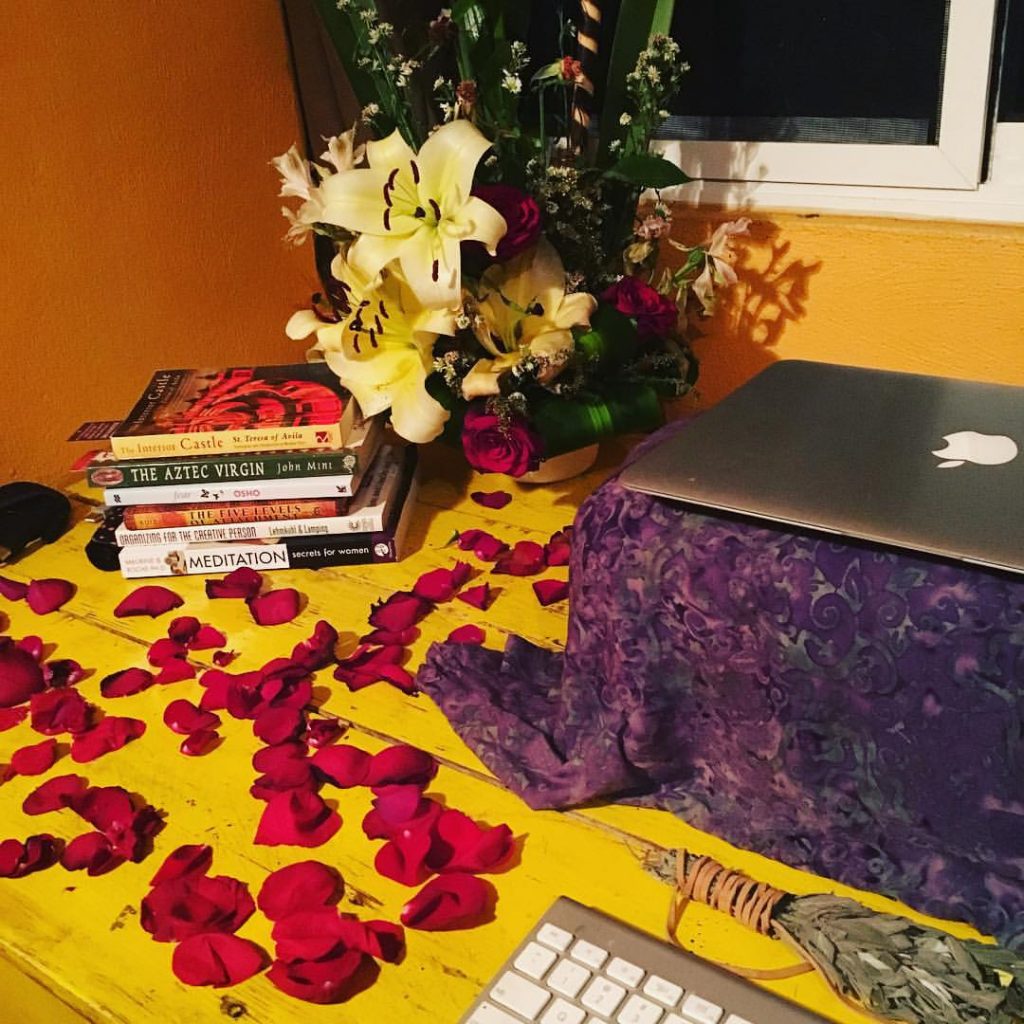What Is a Ritual?
Reading Time: 2 minutes
HeatherAsh Amara

Ceremonies and rituals mark change points in our life. When we bring consciousness to transition, we allow the sacred to enter and create space for reflection and renewal. In our busy world, stopping and honoring the transitional points in our lives and in the world around us is crucial. Each time we pause to ceremonially note a change within or without, we step between the worlds, a magical timeless place where all is possible. We slip out of our normal reality, and can access vital spiritual resources and guidance to bring back with us to enrich our life.
Ceremonies are celebrations, each unique, such as a wedding ceremony. Rituals are sacred ceremonies that have a specific theme or are repeated over time, such as a community summer solstice ritual. In Native American traditions, most sacred events are called ceremonies (e.g., sweat lodge ceremony); for the European shamans, they are called rituals (e.g., cord cutting ritual). The two words are often used interchangeably. Both bridge the sacred and the mundane for healing and/or honoring self or other.
Ceremony and ritual allow us to:
- Raise energy
- Release the past
- Bring clarity
- Celebrate change
- Gather information
- Contact guides
- Clear out old patterns
- Explore fears
- Honor our ancestors
- Bless a new endeavor
- Move stuck emotions
- Set intent
- Open stuck areas
- Express gratitude
- Ask for guidance
- Create closure
- And much more!
Ceremonies and rituals can be well planned or spontaneous, private or public, for an individual or a community. Each is art in motion, prayer made visible. Our imagination and emotional connection are the fuel to forge a connection from the personal to the transpersonal, and back again. They allow us to celebrate all aspects of life, from death to birth, loss to expansion.
Read guidelines for How to Create a Ritual or Ceremony.
Pagan Holy Days of the Year
Solstice and Equinox
- Spring Equinox: Eostar, March 21
Balanced day and night
Planting new seeds, honoring new growth, increasing energy - Summer Solstice: Mabon, June 21
Longest day; darkness returning
Yes! Celebrating fullness and individual expression - Fall Equinox: Lamas, September 21
Balanced night and day
Harvesting and preparing for return of darkness - Winter Solstice: Yule, December 21
Longest night; light returning
A time for stories, community, and reflecting on stillness
Cross Quarter Days
- Candelmas: February 1 (between Winter Solstice and Spring Equinox)
Honoring the returning light; saving resources as needed - Beltane: May 1 (between Spring Equinox and Summer Solstice)
Honoring fertility and sexuality; blossoming! - Lamas August 1 (between Summer Solstice and Fall Equinox)
Honoring the harvest and releasing the old chaff - Samhain: November 1 (between Fall Equinox and Winter Solstice)
Honoring the ancestor and the angel of death, and deepening mystery



